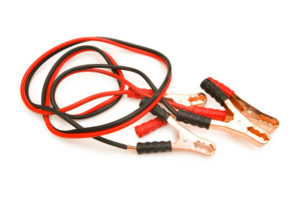Connecting with those who attend as guests is crucial for effective Turnaround. These connections must be meaningful and personal but they must also be effective and institutional.
Meaningful and personal connections probably begin long before the guest arrives on the parking lot. To reach unchurched people in the 21st century the first meaningful and personal connection they experience will generally be in the invitation they receive from a friend or family member.
This meaningful and personal connection will be reinforced on the parking lot if outdoor greeters are in place on a well-marked, properly maintained parking area.
Meaningful and personal connections extend to the interior greeters and hosts/hostesses who cheerfully welcome those who attend while also assisting guests to find essential features such as the nursery, children’s ministry, the elevator, the worship center, etc.
Meaningful and personal connections also extend to the atmosphere of the worship center. This atmosphere will be enhanced by cleanliness, appropriate lighting and contemporary color schemes. Many established churches have beautiful wood work, attractive stained glass and other architectural features that can enhance the worship setting. Sometimes something as simple as the ministry of cords management can de-clutter the platform and thus give a more pleasant atmosphere.
Connections, however, must also be effective and institutional. Three broad areas of connection involve the greeting time, church music and the sermon.
Many established churches thrive on a prolonged greeting time built into the worship experience. It is not uncommon for this greeting time to last for several minutes. In this time regular attenders carry on animated, friendly conversations with most everyone who attends. Guests, however, are generally at a loss in this time frame since they have no history with the larger congregation. This can leave them isolated and alone. Many church guests find this prolonged greeting time one of the most awkward, even distasteful, parts of the worship experience.
Since most people who come to church wish to feel welcome it may be wise to use a greeting time approach of “Just say Hi!” One pastor routinely uses this line, “Don’t sit down until you greet the folks around you. Shake a hand and say ‘I’m glad you came today!’” When the next feature of the worship service begins promptly the greeting time stays focused and guests feel welcomed not isolated.
Church music also provides a connecting point. Music style is not nearly as important as singability of the songs selected. Traditional music still works as do a number of contemporary music styles. The key to effective music is not the style of music but the singability of the songs selected, the quality of the musicians who accompany and the absence of extended monologues by worship leaders.
Singability Questions
- Will people go away singing to themselves one or more of the songs selected?
- Are the songs in a lower key that is within range of most untrained voices?
- Is the language in the songs understandable to the uninitiated?
Quality of Music Questions
- Do musicians rehearse in advance of the service?
- Do rehearsals include the folks running the projection system?
- Can participants clearly follow the melody line of the music so the untrained singer can sing along with the instrument and the leader?
Absence of Monologues by Worship Leaders Questions
- Does the worship leader give essential information to guide the worshippers? This particularly includes standing and sitting instructions. In a hymnal driven setting it may include announcing page numbers if those have not been printed in the worship guide.
- Do the platform leaders lead worship or use their platform time to provide unnecessary detail about their personal lives or other current events?
Connecting to people with the sermon. The average worship service in the United States last approximately 75 minutes. In this time frame the largest portion of time is given to preaching. A few questions may clarify how well the sermon connects to the sermon hearers, especially to the unchurched who attend as guests.
- The preacher’s voice: Is it so quiet and subdued that it becomes a monotone easily ignored? Is it so loud and animated that it is unintelligible? The voice of the preacher is controlled by the preacher according to I Corinthians 14:9-11.
- References to the Bible: Are key Bible passages identified by page number in the Pew Bible, printed in the sermon outline or included in the projected slides?
- Clarity of Thought: Is the main thought clearly demonstrated in the content of the message? Can the preacher avoid rambling additions that do not advance the central thought?
- Application to Life: Does the message address real life issues with a clear call for a next step or follow-up actions?
JUMPSTART YOUR MINISTRY: The Mystery Worshipper
 One means to gain insight on how well worship connects to guests is to use a Mystery Worshipper. This person is recruited in advance to attend a worship service and then to offer a reaction to the experience. For more details see the Mystery Worshipper checklist found at www.Turnaround2020.net.
One means to gain insight on how well worship connects to guests is to use a Mystery Worshipper. This person is recruited in advance to attend a worship service and then to offer a reaction to the experience. For more details see the Mystery Worshipper checklist found at www.Turnaround2020.net.